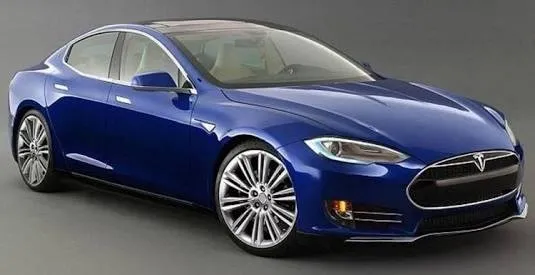The Tesla Model 3 is one of the most anticipated new vehicles of the decade. While the Model S transformed how we see electric cars, the Model 3 is supposed to be the one that democratizes them. Tesla conceived the 3 to be simpler and more affordable, and the company hopes to build millions of them.
Now Tesla not only has to build cars at many times the rate it ever has, but it has to deliver them and provide service and support to a far larger, likely less forgiving owner base. The California automaker is now in the early stages of production ramp-up. Follow along as we run through the vitals on the Model 3, look at why it has created such a buzz, and try to make some sense of it all. Look for regular updates here as the Model 3 story continues to unfold.

Design
At 184.8 inches long, 72.8 inches wide, and 56.8 inches high, with a 113.2-inch wheelbase, the Model 3 fits right in among an established entry-luxury cohort that includes the BMW 3-series, Mercedes-Benz C-class, and Audi A4. Compared with those German offerings, its appearance is quite different, especially from the front, where it eschews a grille in favor of flush aero work and an especially low snout and hood, with headlamps pulled back and resting more atop the fenders than at the leading edge of the car.
Although its profile closely resembles that of the Model S, which is a hatchback, the Model 3 is a five-passenger sedan with a conventional trunk. That allows one of the most innovative design features in the Model 3: its glass roof, which arcs, uninterrupted, all the way from the trunklid to near the front occupants’ heads. It also eliminates the typical rear-window header and helps maximize headroom in back, while allowing the racier roofline and profile (likely contributing to the Model 3’s claimed 0.23 drag coefficient).
It’s inside, however, where the Model 3 makes a far bigger splash. In what could be an ode to design minimalism, cost cutting, assembly simplification, or a mix thereof, Tesla has purged all gauges as well as some traditional switchgear from the Model 3. There’s no instrument cluster, and the only display is a horizontally oriented 15.0-inch touchscreen—an interface that is not only relied on for basic info such as speed, vehicle status, and the battery’s state of charge but also for entertainment, navigation, climate controls, and settings. If you’re looking for knobs to turn or physical buttons to click, this is not your car.
Powertrain
The Model 3, like the Model S, is a rear-wheel-drive car in its base form, with a rear-mounted AC induction motor. All-wheel-drive versions add a front motor as well as other upgrades including Ludicrous Mode performance. These are expected to become available sometime in the second half of 2018.